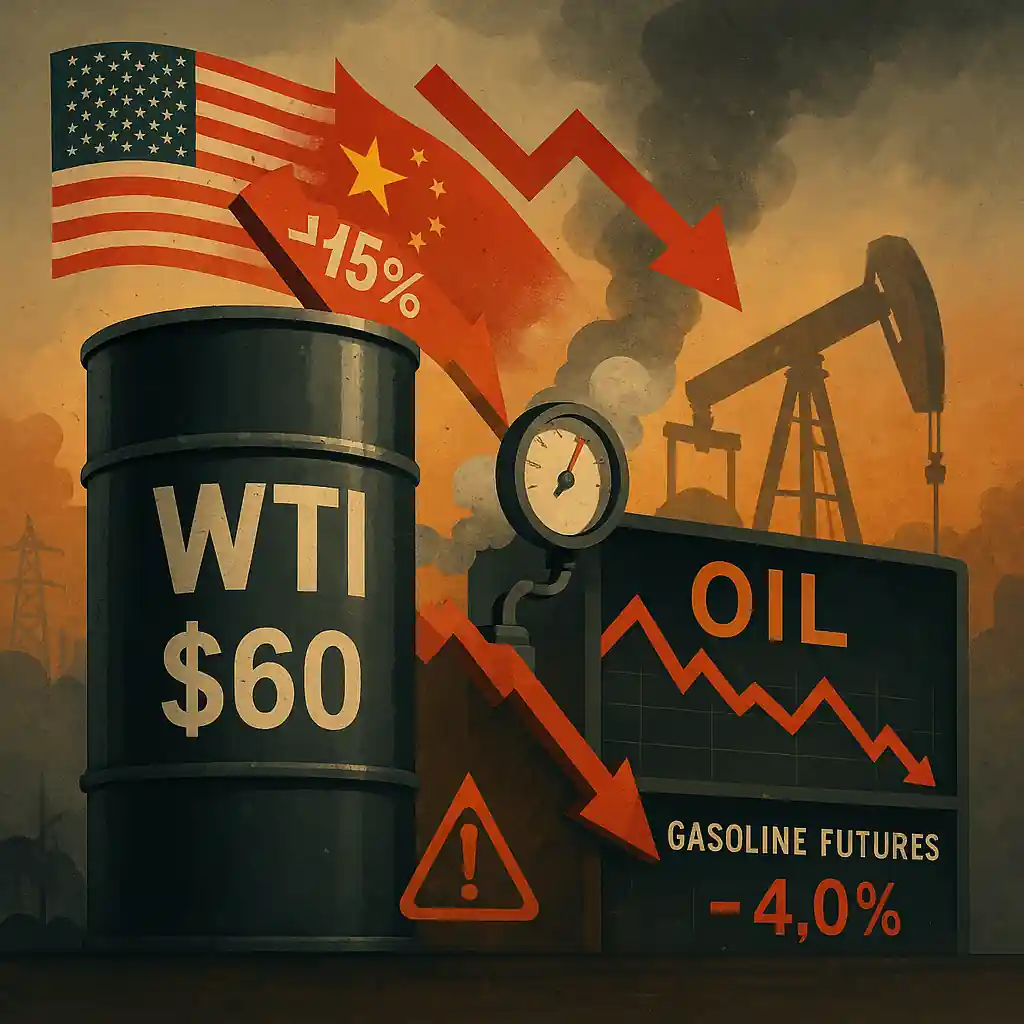Oil Heads for Another Weekly Decline
Oil prices are on track for a second consecutive weekly loss as the US-China trade war continues to rattle global markets. West Texas Intermediate (WTI) hovered near $60 a barrel on Friday, with prices set for a 3% drop this week.
Tensions escalated after China raised tariffs to 125% on all US goods, vowing to ignore further US hikes. These developments spurred volatility across equities, bonds, and commodities, deepening concerns about slowing global growth.
Demand Forecasts Cut as Growth Outlook Worsens
The US Energy Information Administration (EIA) slashed its global crude demand forecast by 500,000 barrels per day, citing the prolonged trade conflict. Market indicators along the oil futures curve signal a growing risk of oversupply.
Since the start of April, oil has retreated more than 15%, pressured by both weaker demand expectations and OPEC+’s decision to ramp up production faster than anticipated.
Trump Tariffs Hit Commodities
President Donald Trump’s administration recently imposed a 145% tariff on Chinese imports. In retaliation, China matched with its own trade penalties, increasing tension between the two global powers.
These moves have led to frantic selloffs across financial markets and put pressure on macro-sensitive commodities like oil.
US Production Still Expected to Rise
Despite the downturn, US Energy Secretary Chris Wright remains optimistic. Speaking on Bloomberg, Wright described the oil market’s selloff as “overblown,” predicting stronger economic performance and higher US crude and natural gas output under Trump.
Gasoline Futures Also Take a Hit
Oil’s slide is affecting refined products, too. US gasoline futures have declined over 4% this week, reflecting concerns about both demand destruction and excess supply.
Analysts See More Price Pressure Ahead
According to BMI, a unit of Fitch Solutions, “High-level economic uncertainty is challenging for oil.” The firm expects oil prices to remain under pressure due to the macroeconomic backdrop and the gradual reversal of OPEC+ production cuts.
Bottom Line
With the global energy landscape in flux, oil continues to face downward pressure from geopolitical risks, trade tensions, and output increases. Until trade conflicts subside and demand stabilizes, crude may remain stuck in a volatile, bearish cycle.




